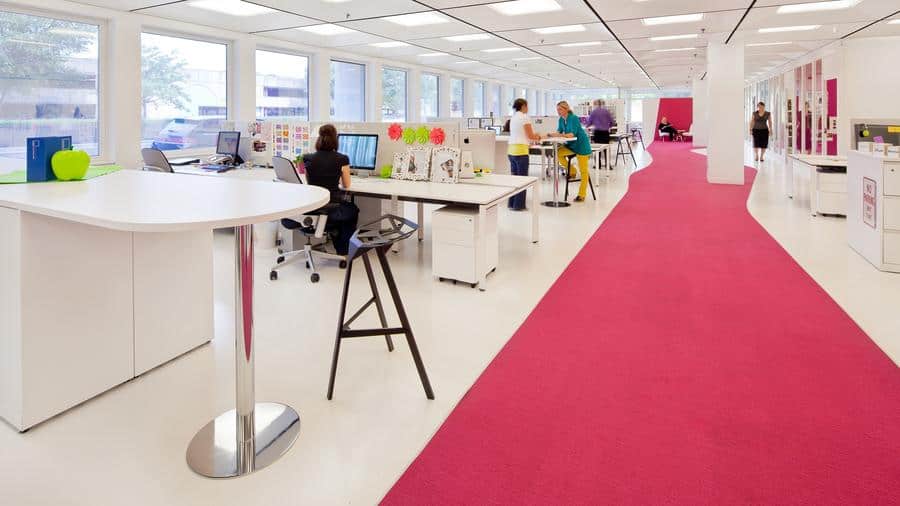With the recent barrage of articles about how your office is killing you and the rising costs of healthcare, wellness programs seem to be the latest corporate craze.
Most employee wellness efforts focus on optional programs that try to convince people to change their lifestyle, but sustaining employee enthusiasm can be a challenge.
If companies want to have a lasting impact on employee health, we need to integrate healthy design into our buildings and our culture.
Design for Activity
Where we place workstations, printers, break areas, and meeting rooms can encourage movement and interaction in the office.
Called “active design,” the theory is to create a stimulating environment that encourages bouts of walking to shared spaces. Yes, designing for activity can sacrifice efficiency, but it also creates energy and vibrancy. The by-product of movement in the office is that it creates opportunities for personal interaction and the cross-pollination of ideas from various parts of the office.
Additionally, workstations with standing desks and walking work stations provide opportunities for activity. Something as simple as a stability ball instead of office chairs makes sitting an exercise activity unto itself. The new Stir Kinetic desk can even remind you when you’ve been sitting too long and track calories burned.
High-top tables sprinkled through the office promote standing meetings and impromptu conversations, keeping people engaged in the conversation and reducing the need to reserve conference rooms. Or go one step further: try a stand-up meeting for your weekly team meeting. Not only do you promote health, but those meetings are guaranteed to be kept short.
Beyond furnishings, regular and purposeful break times encourage people to get up and move. Studies show that regular breaks make people more productive. And as company leaders walk around the office, the walls that physically separate leaders from employees come down, improving communication and relations.
A Healthy Culture
While optimum design encourages collaboration and conversation, employees who are more introverted can find such environments to be stressful.
Companies can reduce environmental stress by offering different types of areas for staff to work – quiet spaces along with more active spaces. With spaces to concentrate as well as collaborate, employees’ mental well-being is as supported as their physical well-being.
Walking meetings for one-on-one discussions also set a healthy tone in the office. Designing both indoor or outdoor paths in and around the office can encourage these encounters, including visible and open stairways.
The goal behind these strategies is to integrate as many tiny healthy behavior changes as possible without the big challenge of committing to a new lifestyle. Just as putting out a fruit bowl instead of a candy dish can change the snacking habits of employees, creating interesting alternatives that invite employees to change their daily habits can have a direct impact on their well-being as well as the way they work.
As health care costs to businesses and employees continue to rise, the imperative grows for companies to map new strategies that can help current staff. These strategies not only can help curb some of the rising costs, but they could even help recruit new talent. Demonstrating a commitment to health through these strategies, companies could find themselves being a healthy workplace of choice with employees producing choice work.
This article is by Jennifer Stukenberg and first appeared in the Jacksonville Business Journal.

